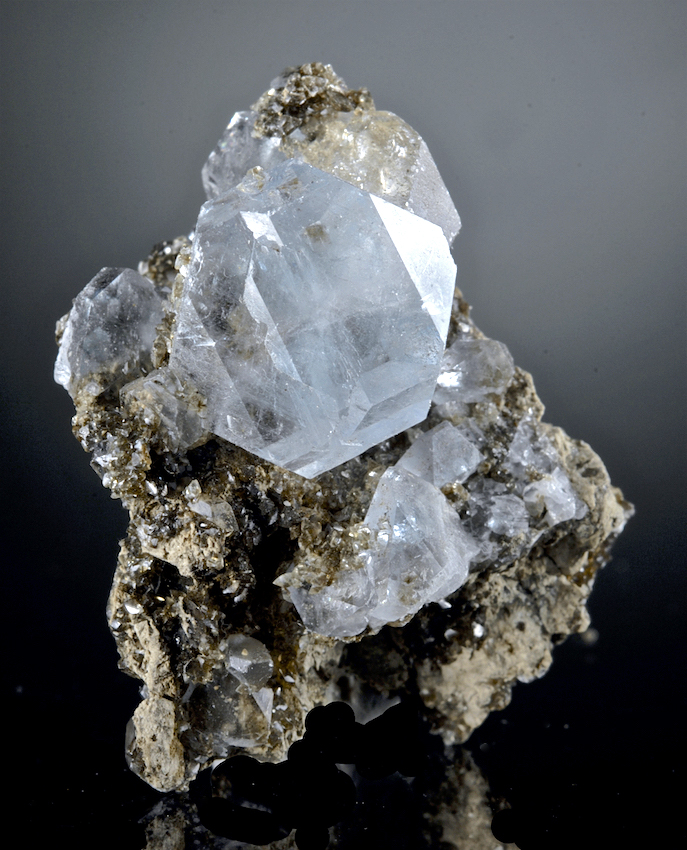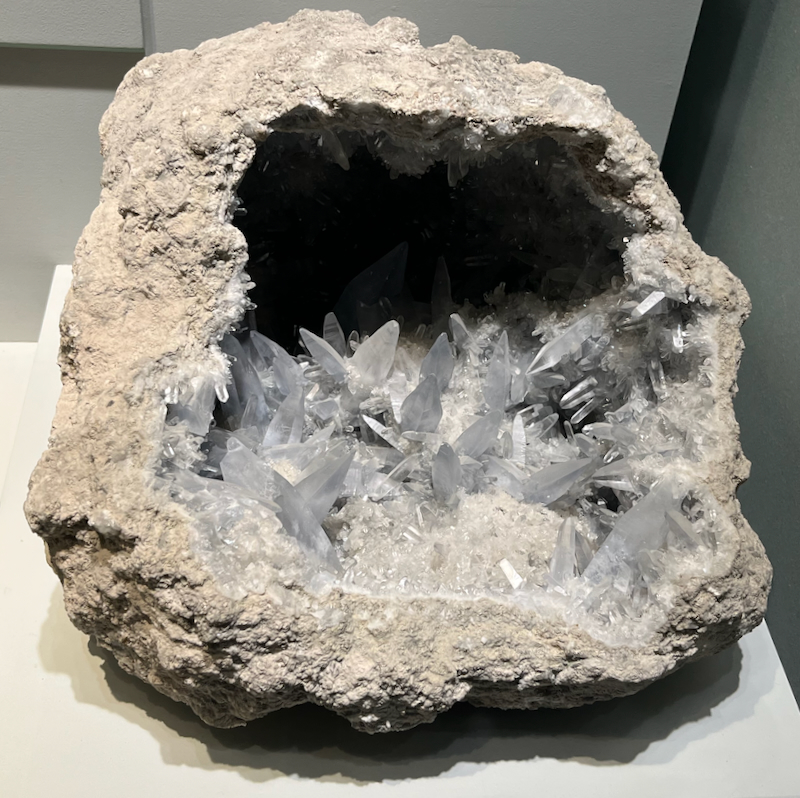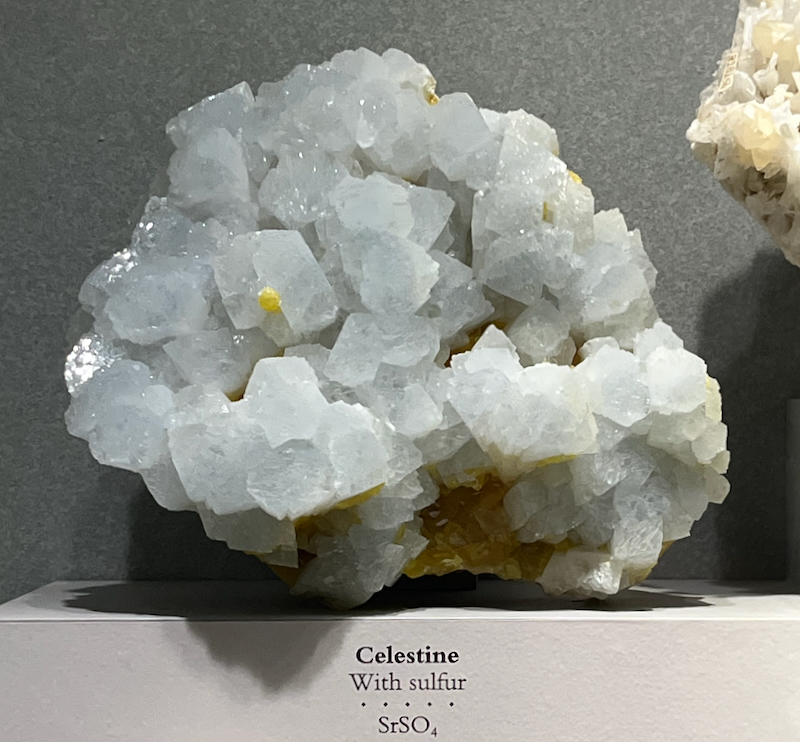Celestine
Also called “celestite,” celestine is best known for its sky-blue color, so it’s no surprise that the name comes from the Latin word for sky. Celestine is one of the very few common minerals mostly made up of strontium. If you’ve ever heard of strontium before, it was probably in reference to “strontium-90,” which is one of the highly radioactive elements produced when you detonate a nuclear bomb. Another explosive occasion for strontium that’s much more fun than harmful is producing deeply red colored sparks when it’s mixed with the gunpowder in fireworks and ignited. However, the mineral celestine is as calm and harmless as a beautiful blue sky. Another common aspect of celestine is that it commonly forms inside of a geode, showing a beautiful blue sparkling interior when you crack open a dull-looking round rock. Celestine is a sulfate mineral, as shown by the SO4 in its formula, and is commonly found where pure sulphur specimens also occur. Usually the two occur together in sedimentary rock, and because of how celestine crystals form, other minerals in the area might include gypsum and halite.
| Formula | Group or Type | Shape | Hardness | Specific Gravity | Streak | Luster |
|---|---|---|---|---|---|---|
| Sr(SO4) | — | Orthorhombic | 3–3.5 | 3.9–4 | White | Vitreous |



